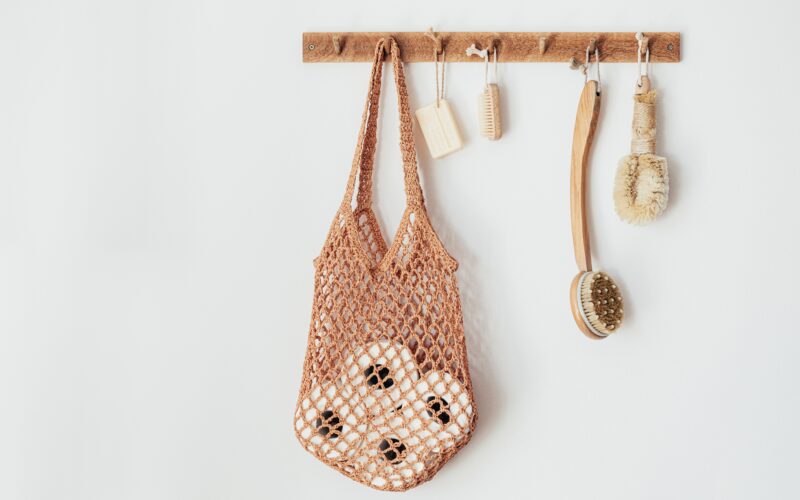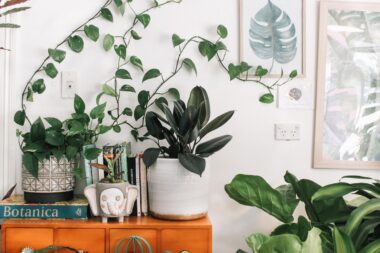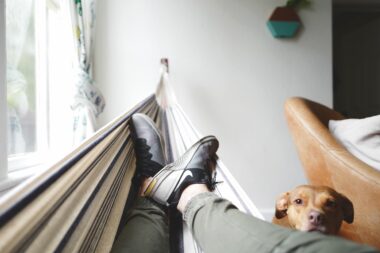Zero-waste living has become a popular concept in the eco-friendly world. While it’s probably not realistic to go completely zero-waste, there’s still plenty of ways to lower the amount of waste you produce. Globally, the average person is responsible for 0.74 kilograms of waste per day. It’s higher in the United States though at 2.2 kilograms, or 4.9 pounds. It’s even higher if you’re a business at 20 billion kilograms per day, so let’s not kid ourselves about who the heavy hitters really are here. But that doesn’t mean that we can just turn a blind eye. Everyone can live a more sustainable and environmentally friendly lifestyle. We’ve gathered 15 tips for zero-waste living to inspire you on your sustainability journey.
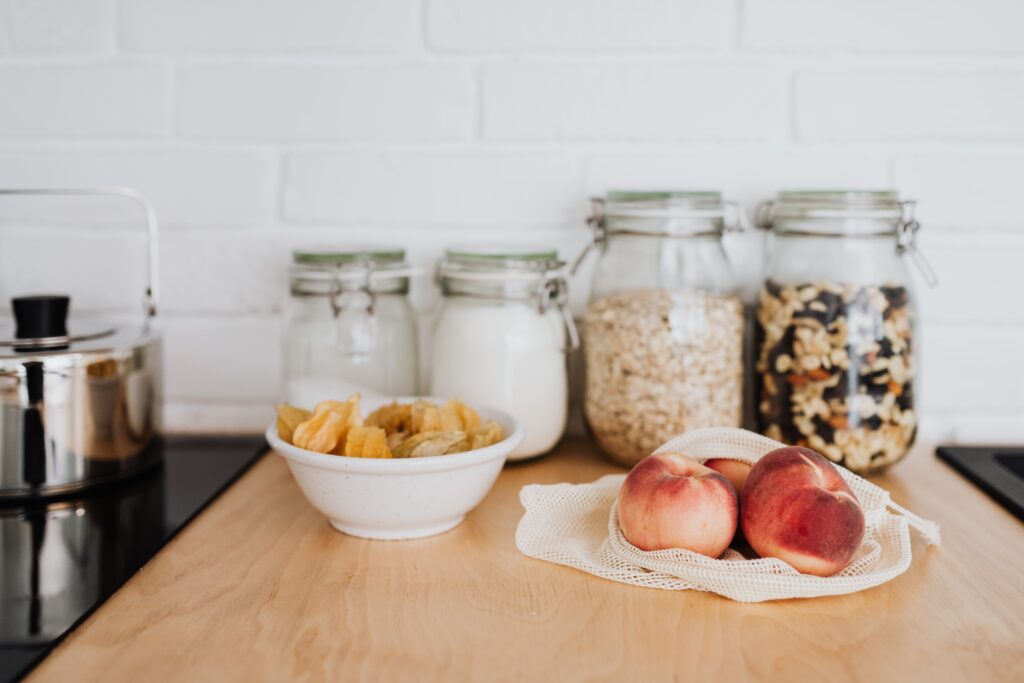
In The Kitchen
1. Avoid Plastic Packaging Containers, Instead Buy Bulk Goods
Plastic and packaging makes an astonishing 82.2 million tons of waste every year. In fact almost 30% of landfill waste is containers and packaging. Chances are if you look at your own household waste, a sizeable portion probably falls into this category too. You can reduce the amount of packaging you throw out by either reusing it (if possible) or switching to a zero-packaging alternative like buying bulk goods. Stores like BulkBarn in Canada let you bring and fill your own containers keeping everything nice and eco-friendly.
2. Avoid Plastic Wrapped Food, Instead Buy Loose And Use A Mesh Bag
We’ve all seen the ridiculous cases of food wrapped in plastic, like the individually wrapped and boxed strawberry or the peeled and plastic wrapped oranges. And sure they’re a bit convenient sometimes but ending up with a pile of plastic to eat something from the earth just doesn’t sit right. Avoid plastic wrapped foods by bringing your own mesh bag to the store or market and wrap your produce in something more sustainable and reusable.
3. Avoid Tea Bags, Instead Use Loose Leaf Tea
Tea bags have been making tea drinking more convenient since the early 1900s. But they also make tea drinking less environmentally friendly. A 2019 study found that steeping a single teabag at brewing temperature (95 °C) releases approximately 11.6 billion microplastics and 3.1 billion nanoplastics. Do you take sugar and milk with your nanoplastics? Ditch these mini plastic releasers and try using loose leaf tea and a tea strainer instead.
4. Avoid Throwing Food In The Garbage, Instead Compost It
Food scraps and peels can avoid the landfill and work for you and the environment instead. Composting can divert up to 30% of your waste from the landfill and creates a nutrient rich treat for your soil.
5. Avoid Throwing Out Leftovers, Instead Plan Your Meals
About 11% of household food goes to waste. This food, that took energy and resources to make, ends up in a landfill producing greenhouse gasses as it decomposes. Avoid throwing out leftovers by spending a few minutes each week to plan what you can freeze or make two meals from.
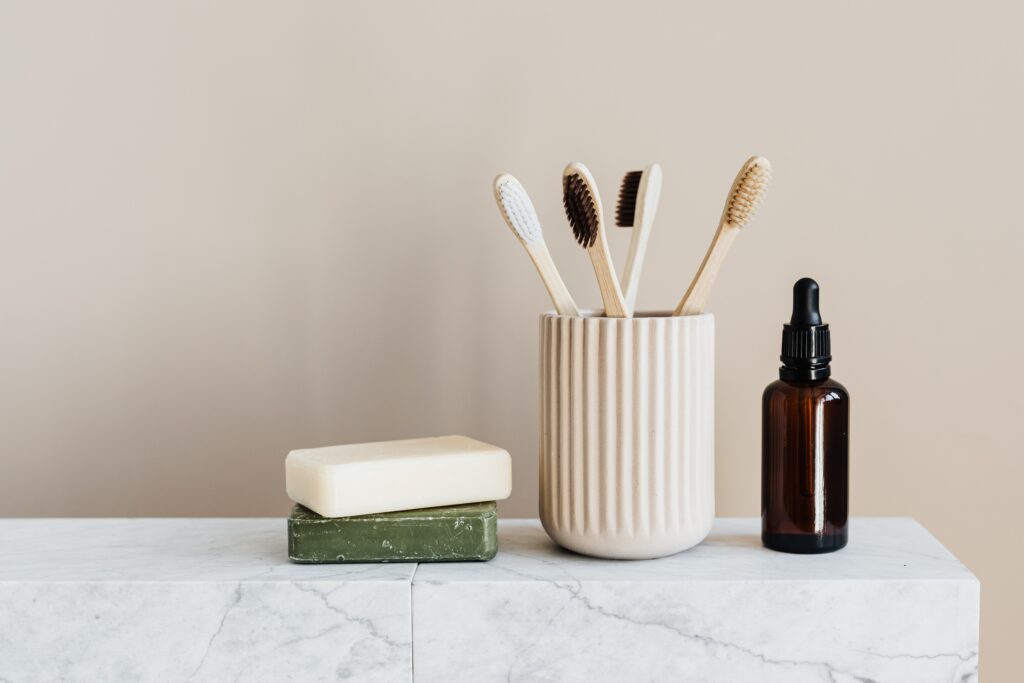
In The Rest Of Your Home
6. Avoid Liquid Soap, Instead Use Bar Soap
Liquid soap has been around since the mid 1800s, with the industry now valued at over 18 billion USD globally. And while there’s no denying how great and easy to use liquid soap is, especially for those with mobility issues, unfortunately it usually also comes wrapped in plastic. And plastic bottles can take up to 450 years to decompose. If it’s a must, some bulk goods stores sell liquid soap that you can bring your own container to fill. Otherwise, plenty of companies, like Lush, sell soap packaging free, helping you avoid any waste.
7. Avoid Letting The Tap Run, Instead Fill A Basin
This feels like advice from the olden days but maybe they were on to something back then. A running tap wastes up to 10 litres of water per minute. Even if you weren’t bothered about the water waste, you’re washing money down the sink too. In this economy? Fill a basin to wash your face, fill a glass to brush your teeth, fill whatever to stop wasting water with a running tap.
8. Avoid Replacing Things Immediately, Instead Try To Repair It First
We live in a single-use, consumerist society urging us to buy cheap and replace often. Did that cheap thing just break? Don’t worry about it, just throw it away and buy a new one. It’ll break again in a few months, but that’s ok, it’s so cheap.
It’s easy to get caught up in the false economy of cheap goods, especially when quality items are so often too expensive for most and completely out of reach for the average person. But there’s something to be said for saving up and investing in a quality item. Not only is it less likely to break, but if it does, it’s actually fixable. Cheap plastic products aren’t designed to be repaired and the price point keeps it so you don’t even think about it. But pay a bit of money for a thing, and you’re going to hesitate before you chuck it.
9. Avoid Buying Cleaning Products, Instead DIY Your Own
Most cleaning products come in single-use plastic containers. The containers can be recycled for the most part (once you’ve cleaned and dried them), but they’re small so you need to buy them pretty frequently. Instead, invest in a bucket and some reusable spray bottles (you can reuse your old cleaner spray bottles if you still have them) and DIY your own cleaning products. Not only are you getting rid of the need to buy, clean, dry and recycle all those cleaning products but you’re not sending toxic chemicals into the environment with conventional cleaners.
For some DIY cleaning recipes, read “5 Eco-Friendly DIY Home Cleaner Recipes”.
10. Avoid Junk Mail, By Removing Yourself From Databases
Nearly 100 million trees are wasted on junk mail in the United States alone. And a lot of it just goes straight to a landfill, only 40% ends up getting recycled. The first step to avoiding junk mail is to try and cut it off at the source. Find out your country’s databases and services to help you remove your name from mailing lists. Failing that there’s always the no junk sticker or sign on your mailbox. Failing that again, recycle your junk mail instead of throwing it in the garbage.
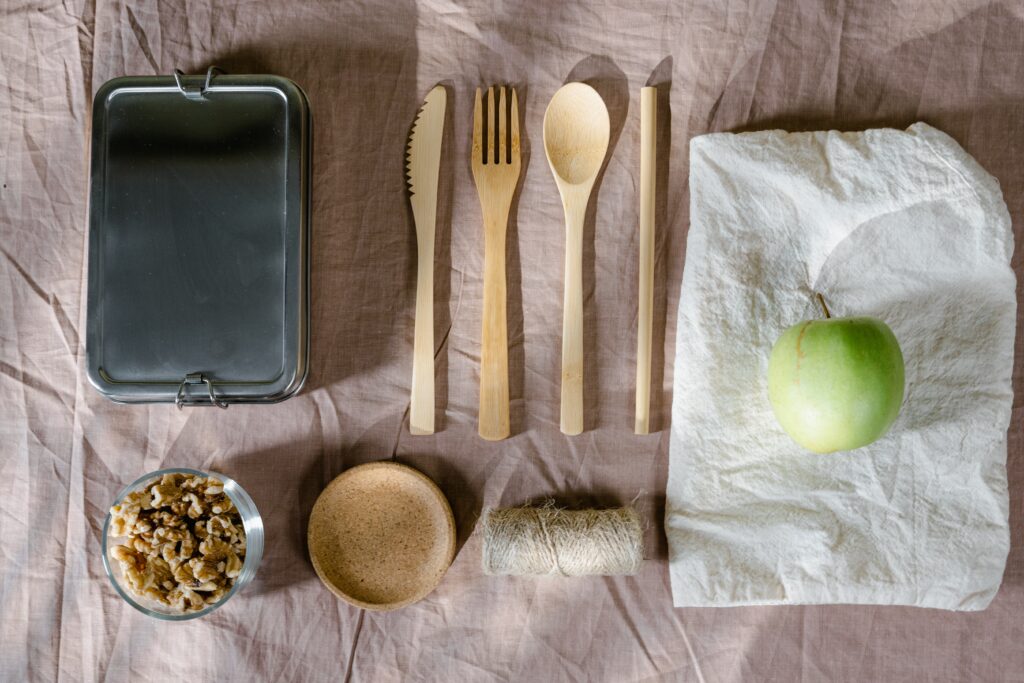
When You’re Out And About
11. Avoid Plastic Water Bottles, Instead Bring A Reusable Water Bottle
We use 1.2 million plastic bottles every minute and about 91% of plastic isn’t recycled. Since essentially all plastic that’s ever been made still exists in some way, shape or form, we’re going to run out of places to put all this plastic soon. Using a reusable water bottle can save about 156 plastic bottles a year. And since about 40% of bottled water is actually tap water, why not just use your own?
12. Avoid Single Use Plastics, Instead Make Your Own Travel Kit
Single-use plastics like cutlery and plastic straws have been banned in the EU since 2021. In the United States however, they’re only banned in national parks and not until 2032. The US wastes 40 billion plastic utensils per year. And they can’t be recycled, they’re too small and typically too contaminated. Avoid single-use plastic when you’re out by making and bringing your own travel kit. Just grab a cloth napkin, wrap some cutlery from your kitchen and away you go.
13. Avoid Plastic Shopping Bags, Instead Bring A Reusable One
Canada, among 77 other countries, recently banned plastic checkout bags in an attempt to reduce plastic consumption and waste. Globally, we produce over 7 million plastic bags per day. Less than 1 percent of them are recycled. Avoid adding to the global plastic bag pile and invest in a reusable bag or two. If you happen to forget them, keep an eye out for cardboard boxes in store either.
14. Avoid Chain Stores, Instead Shop At Your Farmer’s Market Or Roadside Stall
Obviously this isn’t an option for everyone, farmer’s markets aren’t exactly plentiful and not everyone has a car to drive to a farm for their produce. But, if you do have access to a market, shopping there can be great for your wallet and the planet. Farmer’s markets help keep food local and seasonal (i.e. more delicious). Produce is generally loose and packaging free, keeping excess waste out of the landfill. Remember to bring your reusable bags for all your seasonal goodies.
15. Avoid Take-Away Meals, Instead Bring Your Own
Take-away containers aren’t typically the most eco-friendly packaging and once it’s covered in food it’s too contaminated to be recycled anyway. Avoid take-aways where you can (never say never, some places need to be sampled) and bring your own lunch or snacks. Invest in a small reusable food container that you can bring with you on the go.
Sustayn is designed to present the most useful recommendations for environmentally friendly approaches and items. We update links when possible, but note that links can be broken and subject to change.
